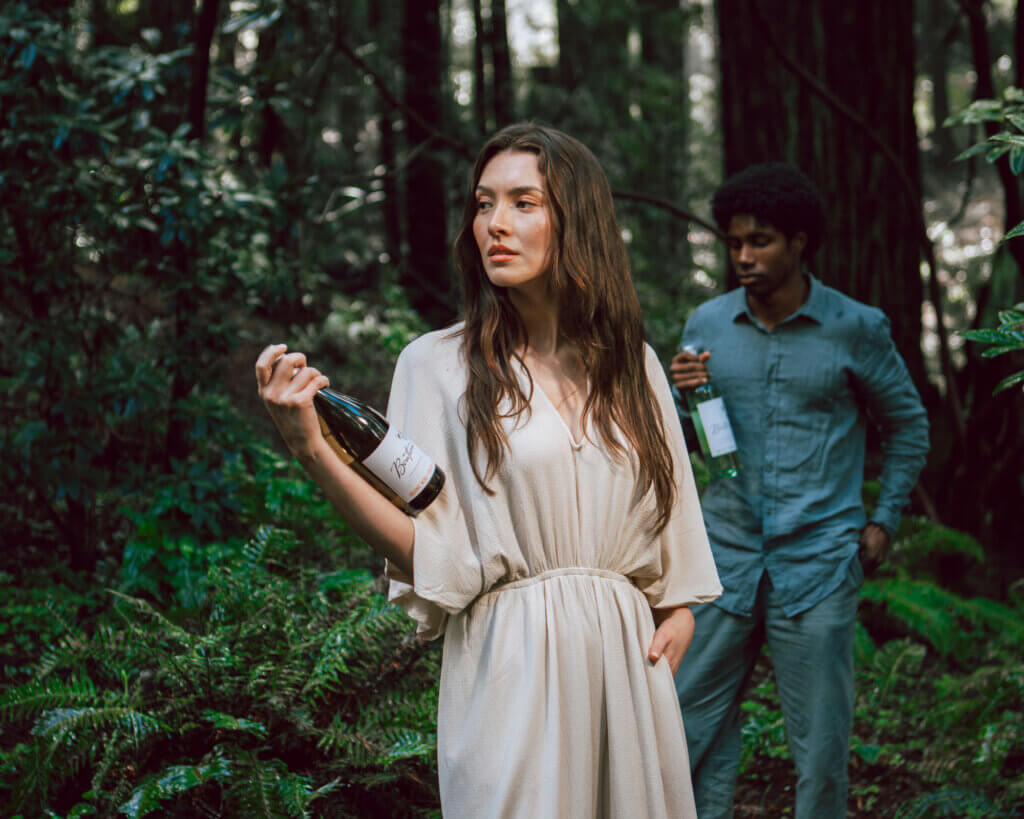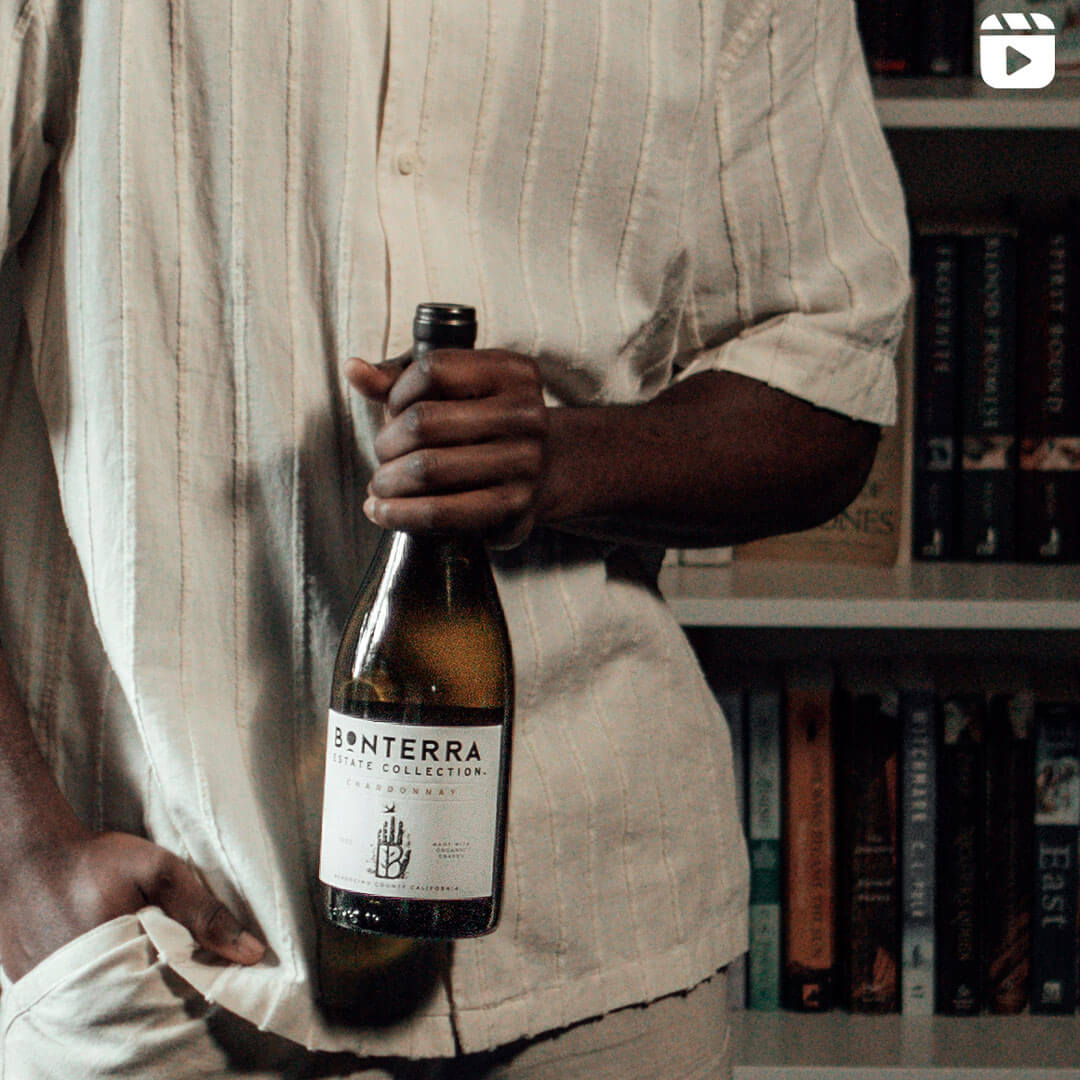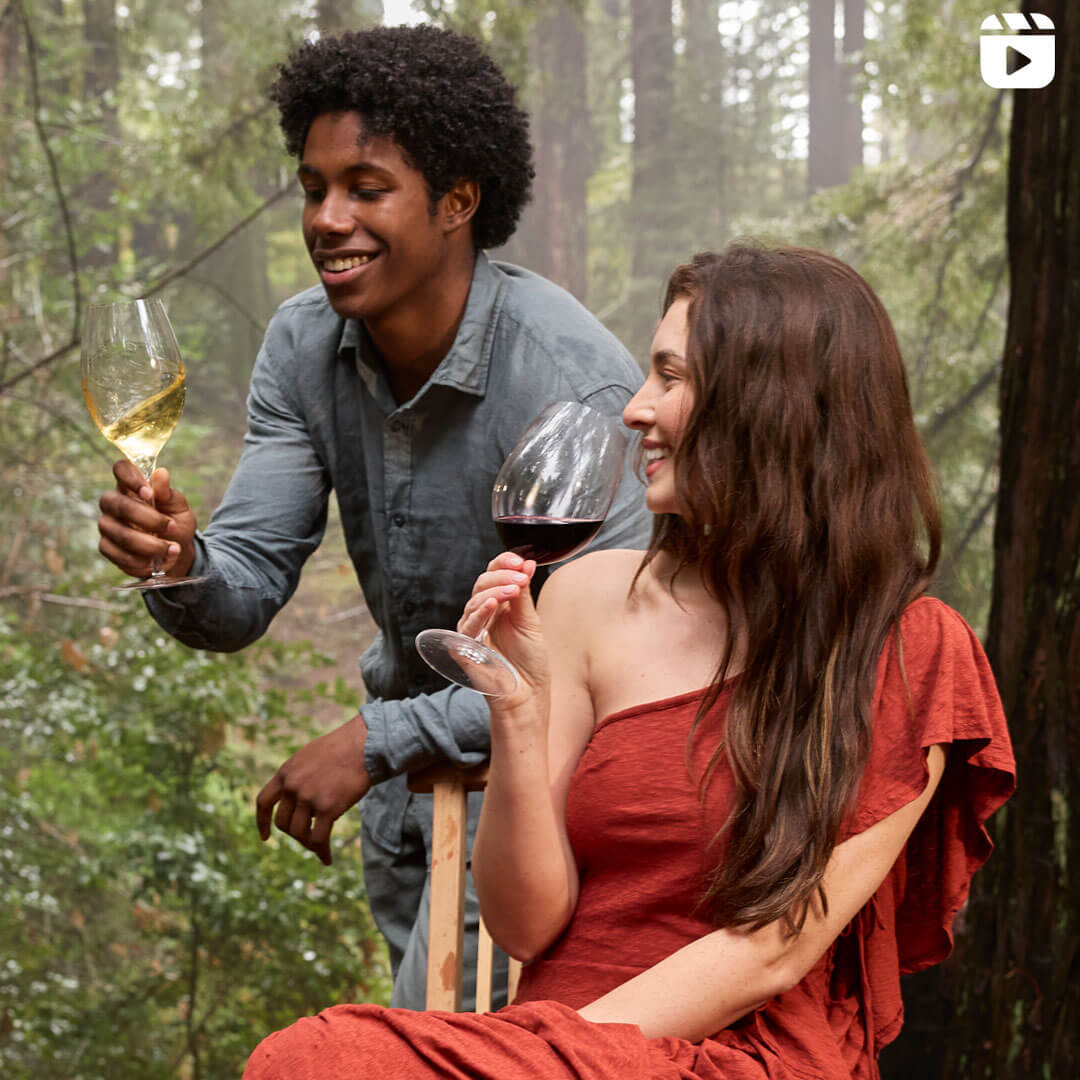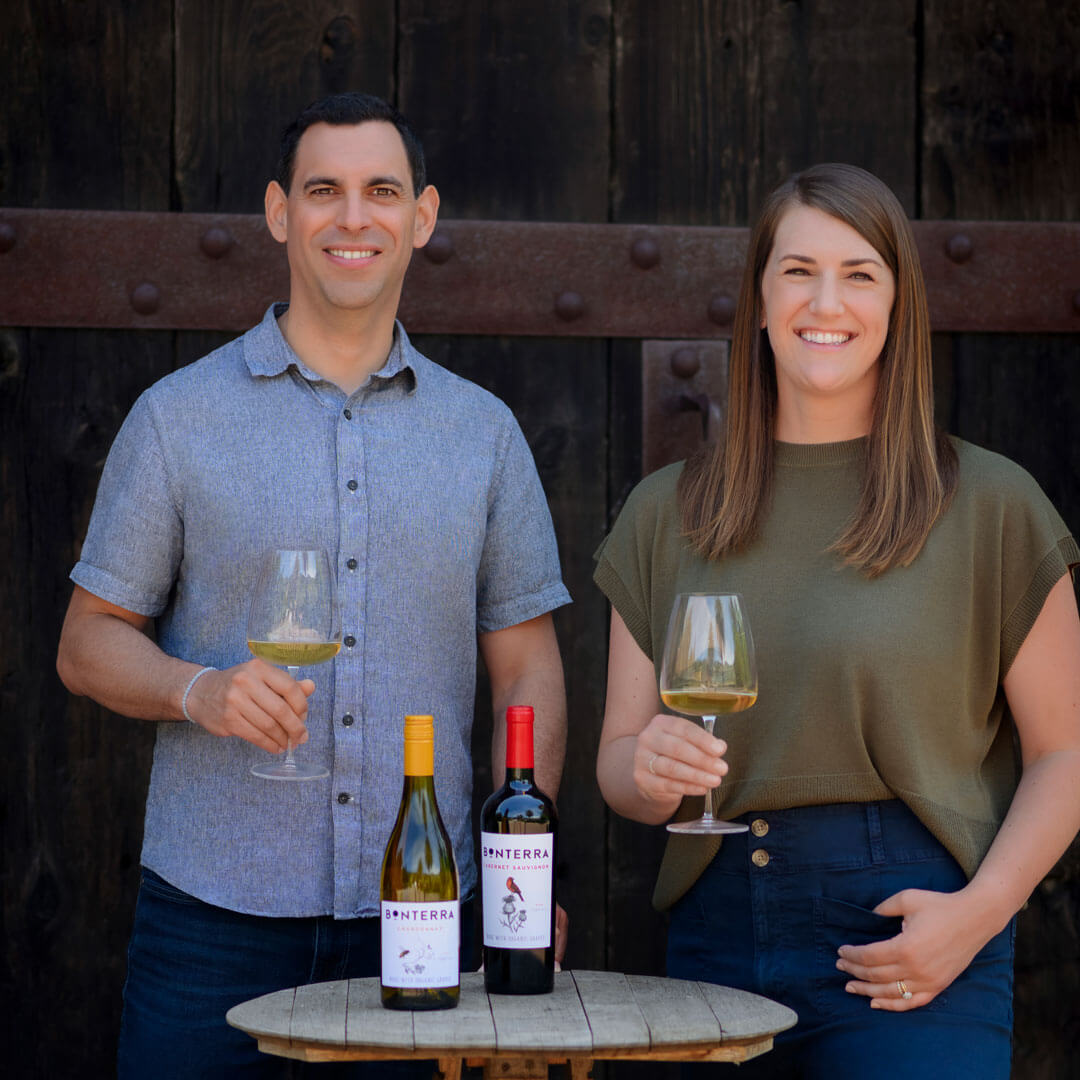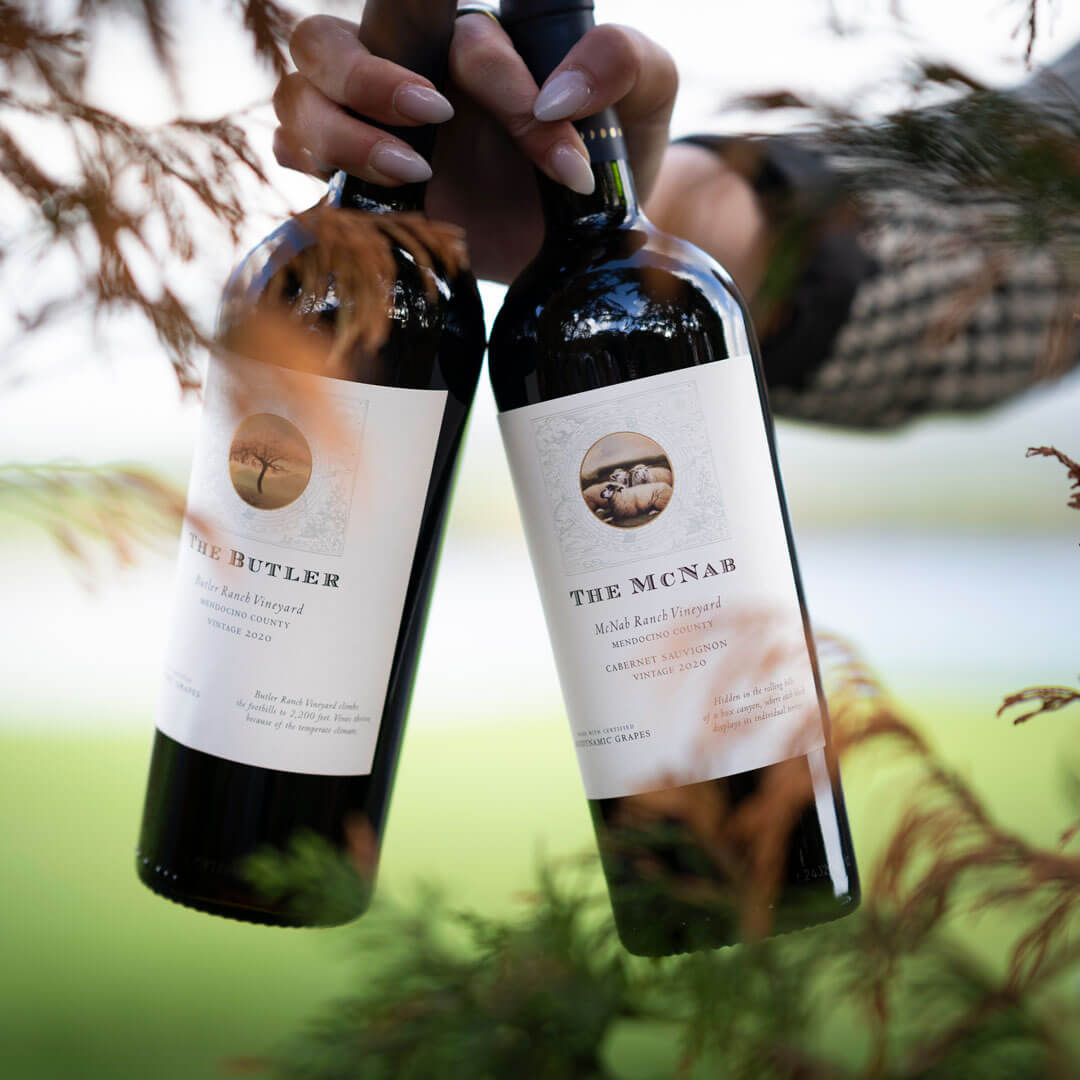When you approach wine, you discover that every bottle tells a story. Whether you’re seeking the perfect pour for a casual Wednesday evening or selecting something special for a milestone celebration, choosing wine should feel like an adventure rather than a challenge. At Bonterra, we believe that understanding a few key principles—combined with a spirit of exploration—can transform any wine selection into an opportunity for discovery.
Understanding Your Palate: The Foundation of Wine Selection
Just as every vintage tells the story of its growing season, your palate tells the story of your unique taste preferences. We find it helpful to break down wine preferences into three key components that serve as your tasting north star:
Savory Enthusiasts
If you gravitate toward robust, complex flavors, you’ll likely enjoy wines with generous tannins. Our Bonterra Cabernet Sauvignon, with its layers of black cherry and blackcurrant accented by spice and toast, delivers the kind of structured complexity savory palates crave. These wines shine alongside rich, umami-laden dishes.
Sweet and Heat Adventurers
For those who enjoy the interplay between sweetness and spice, wines like our Bonterra Pinot Gris create delightful harmony with spicier cuisines. The wine’s subtle sweetness acts as a cooling counterpoint while maintaining vibrant freshness that keeps your palate engaged.
Acid Aficionados
If bright, zesty flavors capture your attention, you’ll find joy in wines with pronounced acidity. Our Bonterra Sauvignon Blanc, with its vibrant citrus and kiwi notes, exemplifies this style. These wines excel at elevating citrus-infused dishes and fresh seafood, as their crisp character refreshes your palate with each sip.
Mastering Food and Wine Harmony: A Guide to Perfect Pairings
The relationship between wine and food invites the magic of dining to truly come alive. Understanding a few key principles equips you to create combinations that elevate what’s in your glass and on your plate. Our progression of wines offers perfect partners for every dish:
- Light Dishes: Our Sauvignon Blanc, with its vibrant acidity and citrus notes, pairs beautifully with:
- Fresh oysters with mignonette (the wine’s crisp palate harmonizes with briny ocean flavors)
- Baby lettuces with herbs (kiwi notes enhance delicate greens while subtle herbaceousness complements fresh herbs)
- Pan-seared halibut (crisp acidity cuts through richness while complementing herbal accompaniments)
- Medium-Weight Dishes: Bonterra Chardonnay, offering layers of pear, pineapple and cantaloupe, excels alongside:
- Cedar-plank salmon (subtle tropical notes complement smoky elements)
- Grilled stone fruit with ricotta (the wine’s stone fruit notes echo grilled peaches, while floral elements add complexity)
- Fresh corn risotto (toasty notes harmonize with sweet corn while balanced acidity cuts through richness)
- Hearty Fare: Our Cabernet Sauvignon, with its structured tannins and dark fruit complexity, stands up to:
- Prime rib (tannins do double duty, softening this dish’s richness while enhancing its savory character)
- Mushroom risotto (earthy notes complement while fruit adds depth)
- Aged Manchego (complexity matches the cheese’s crystalline texture and nutty depth)
The Art of Complementary Pairings
Some pairings work by creating harmony through similar flavors. For example:
- Our oak-kissed Chardonnay with succulent roast chicken creates a seamless experience wherein vanilla and toast notes echo golden skin, while buttery texture mirrors tender meat
- The Butler red blend paired with braised short ribs allows dark fruit notes and subtle spice to enhance the meat’s rich character
- Bonterra Rosé alongside fresh chèvre brings bright acidity to balance this cheese’s tanginess, while subtle cherry notes complement fresh herbs.
The Power of Contrast
Other pairings succeed through opposition:
- Our Pinot Gris combined with spicy Thai cuisine creates balance wherein the wine’s subtle sweetness tames heat while acidity refreshes
- Zinfandel paired with barbecue invites pepper notes to shine while the wine’s renowned fruit-forward quality tames sauce’s intensity
- Sparkling wine with fried chicken; effervescence cuts through richness while maintaining flavor integrity.
Seasonal Pairing Magic
Let us guide you through a year of perfect pairings, wherein the crisp whites of spring give way to the sun-kissed rosés of summer, followed by the earthy reds of autumn, and the rich, flavorful wines of winter. Each selection is a testament to the quality of our organic winery and our commitment to elevated sustainability, delivering a taste of the good earth in every glass.
Spring
As tender vegetables emerge during the height of spring, it’s the perfect time to reach for the crispest whites and rosés.
- Sauvignon Blanc with asparagus (natural affinity for spring vegetables)
- Rosé with strawberry and arugula salad (fruit notes complement berries while acidity balances peppery greens)
- Pinot Gris with spring pea risotto (delicate flavors harmonize perfectly)
Summer
When temperatures rise and you’re at the height of your sunkissed best, it’s time to try summer’s finest chilled reds and creamy whites.
- Chardonnay with grilled scallops (tropical notes complement sweet seafood)
- Chilled Pinot Noir with grilled portobello mushrooms (subtle earthiness complements while berry notes brighten)
- Rosé with watermelon and feta salad (matching fresh flavors mutually elevate)
Fall
With the arrival of harvest, we love to enjoy earthy, piquant reds in anticipation of the seasonal turn.
- Merlot with wild mushroom pasta (dried herbs complement earthiness)
- The McNab red blend with roasted root vegetables (herbs complement earth tones)
- Zinfandel with spice-rubbed pork (pepper notes enhance seasoning)
Winter
In cooler months, as we near the first frost, you may find that what you crave is a mouthwatering, full-bodied red.
- Cabernet Sauvignon with braised short ribs (structure matches richness)
- The Butler red blend with aged cheeses (complexity matches intensity)
- Chardonnay with creamy winter soups (richness complements while acidity balances)
Decoding Wine Labels: Your Map to Informed Choices
Wine labels contain a wealth of information that can help guide your selection. Think of a wine label as a story waiting to be told—each element offering clues about what’s inside the bottle.
Varietals: Understanding Grape Types
The varietal listed on a wine’s label tells you which grape variety dominates the wine. At Bonterra, our single-varietal wines express the pure character of each grape:
- Sauvignon Blanc: Known for bright citrus, kiwi, and melon notes, this varietal creates wines that are crisp and refreshing
- Chardonnay: Our most popular white varietal, offering layers of pear, pineapple, lemon zest and cantaloupe with subtle floral notes
- Pinot Gris: Delivers delicate citrus and floral characteristics, perfect for lighter dishes
- Rosé: Though technically a style rather than a varietal, our Rosé showcases watermelon and blood orange notes
- Pinot Noir: A lighter-bodied red varietal with bright berry notes and subtle oak spice
- Merlot: Presents rich boysenberry and plum flavors accented by dried herbs
- Zinfandel: Offers bold fruit flavors with distinctive peppery notes
- Cabernet Sauvignon: Our most structured red varietal, featuring layers of black cherry and blackcurrant.
See something you’d like to try? At Bonterra, we make it easy to order wine online.
Color plays a big role in how wine is perceived, as it influences both the finish and overall experience. The smooth texture of our wines ensures a great drinking experience. Each sip provides a burst of flavor, leaving a pleasant smooth sensation.
Understanding Wine Regions: Bonterra’s Own
A wine’s region tells you about its terroir—the unique combination of soil, climate, and geography that shapes its character. For example, Mendocino County’s terroir offers an ideal backdrop for sustainable winegrowing and quality wine, exemplified by Bonterra’s hallmark organic winemaking and acclaimed wines. To wit, the sun-drenched inland valleys of Mendocino offer the perfect canvas for Bonterra’s style of farming, as warm days and cool nights keep grapes healthy and acid levels high, while aridity during the growing season keeps moisture levels low and pests at bay without the need for inorganic inputs.
While cool nights allow whites to remain vibrant, the area’s favorably warm microclimate provides extended heat accumulation that allows red varietals to achieve optimal phenolic ripeness, resulting in wines of depth and complexity. The region’s diverse soils, ranging from gravelly loams to iron-rich earth, further contribute to our wines’ distinctive terroir expression.
Bonterra’s commitment to organic and regenerative farming practices amplifies the unique voice of each varietal and terroir. This harmonious relationship between grape and place is at the heart of our winemaking philosophy, resulting in wines that are true ambassadors of Mendocino’s rich viticultural tapestry.
Special Designations That Matter
A greater understanding of label terminology will further elevate your appreciation and enjoyment of what you’re sipping. While many designations are merely marketing embellishments, certain appellations carry legal weight and offer valuable insights into a wine’s provenance and character.
Wine Aging: Understanding the Impact of Time
Wine aging can transform the taste of a bottle, adding complexity and depth. However, not all wines are meant to age. While some wines—particularly reds with higher tannin content, like Cabernet Sauvignon—develop more character over time, others are best enjoyed young and fresh. Here’s how aging impacts wine:
- Red Wines: Wines like Bordeaux or Burgundy benefit from aging wine at home. As they mature, tannins soften, and the flavors evolve, offering earthy, leathery, and spicy notes that deepen over time.
- White Wines: While many whites are meant to be consumed young, some, such as high-quality Chardonnay, can evolve with age, developing buttery and honeyed notes.
- Rosé and Sparkling Wines: Most rosés and sparkling wines are crafted to be enjoyed young for their freshness and vibrancy.
The aging process depends on factors such as grape variety, acidity, and storage conditions. Knowing when a wine is at its peak is part of the fun of wine exploration!
Organic Certification
As America’s leading organically certified winery, this designation is core to our identity. At a high level, organic certification of grapes indicates:
- Free from use of synthetic pesticides or fertilizers
- Organic farming practices
- Enhanced biodiversity in vineyards
- Natural pest management
- Pure, flavorful fruit expression in wines
Estate Grown
When you see “Estate” on our wines, it signifies:
- Grapes grown on our own land
- Stewardship by our team from vineyard to bottle
- Harvesting at optimal ripeness
- Immediate processing at our winery
- Gratitude you’re supporting our home ranches
Red Wine Blend vs. Varietal Wine
While varietal wines showcase a single grape type, our wine blends like The Butler and The McNab offer beautiful complexity:
- Multiple grape varieties
- Inviting, multifaceted flavor profiles
- Composite representation of a style: sum of parts
Navigating Scores and Critical Acclaim
While the ultimate arbiter of a wine’s quality is always your own palate, the insights of respected critics or influencers can illuminate the path of discovery:
The Nuances of Numerical Appreciation
Wine scores offer a shorthand for excellence, with the upper echelons representing:
- 90-94: Wines of outstanding character and complexity
- 95-100: Legendary bottles that define their categories
Bonterra’s unwavering commitment to quality is reflected in our consistent achievement of 90-95 point wines, celebrated for their depth, balance, and exceptional flavor profiles. With more than 50 scores of 90+ since 2021, our wines stand as a testament to the power of organic and regenerative farming.
Beyond Numbers: The Critic’s Palette
Wine critics, whether authenticated or self-styled, paint vivid portraits with their words, offering:
- Evocative descriptions that awaken the senses
- Insights into a wine’s evolution and aging potential
- Thoughtful suggestions for culinary companionship
The Joy of Wine Exploration
Embarking on a journey through the world of wine should be something that you enjoy—a relaxing hobby and something to savor— not a daunting examination. We invite you to embrace the following tenets to keep your oenological exploration uplifting:
- Start with what you know you enjoy, then gradually branch out
- Pay attention to the characteristics that please your palate
- Keep notes on your favorites and what made them special
- Don’t be afraid to revisit wines in different seasons or with different foods
- Consider joining our wine club for regular exploration of new selections
Creating Perfect Moments
Whether hosting an intimate dinner or celebrating one of life’s big moments, consider these tips for wine service:
- Remove whites from the refrigerator 5-15 minutes before serving
- Give reds a brief chill (10-15 minutes) if the room is warm
- Store wine away from direct sunlight and temperature fluctuations
- Use proper glassware to enhance wine aromas and flavors
- Allow wines to breathe, especially fuller-bodied reds
Embracing the Journey
Remember that choosing wine, like choosing your next vacation destination or what to cook for dinner tonight, is a personal adventure of discovery.
At Bonterra, we believe this journey should be accessible and sustainable, enabled by wines that honor both palate and planet. Whether you’re just beginning to explore wine or looking to expand your horizons, we invite you to discover our collection of organically farmed wines. If you’re searching for the perfect gifts for wine lovers, our wines make an exceptional choice. Each selection tells a story of careful cultivation and thoughtful craftsmanship, and promises a new tale shaped by values of quality, conscious farming, and our passion for creating wines that bring joy and style to any occasion.
